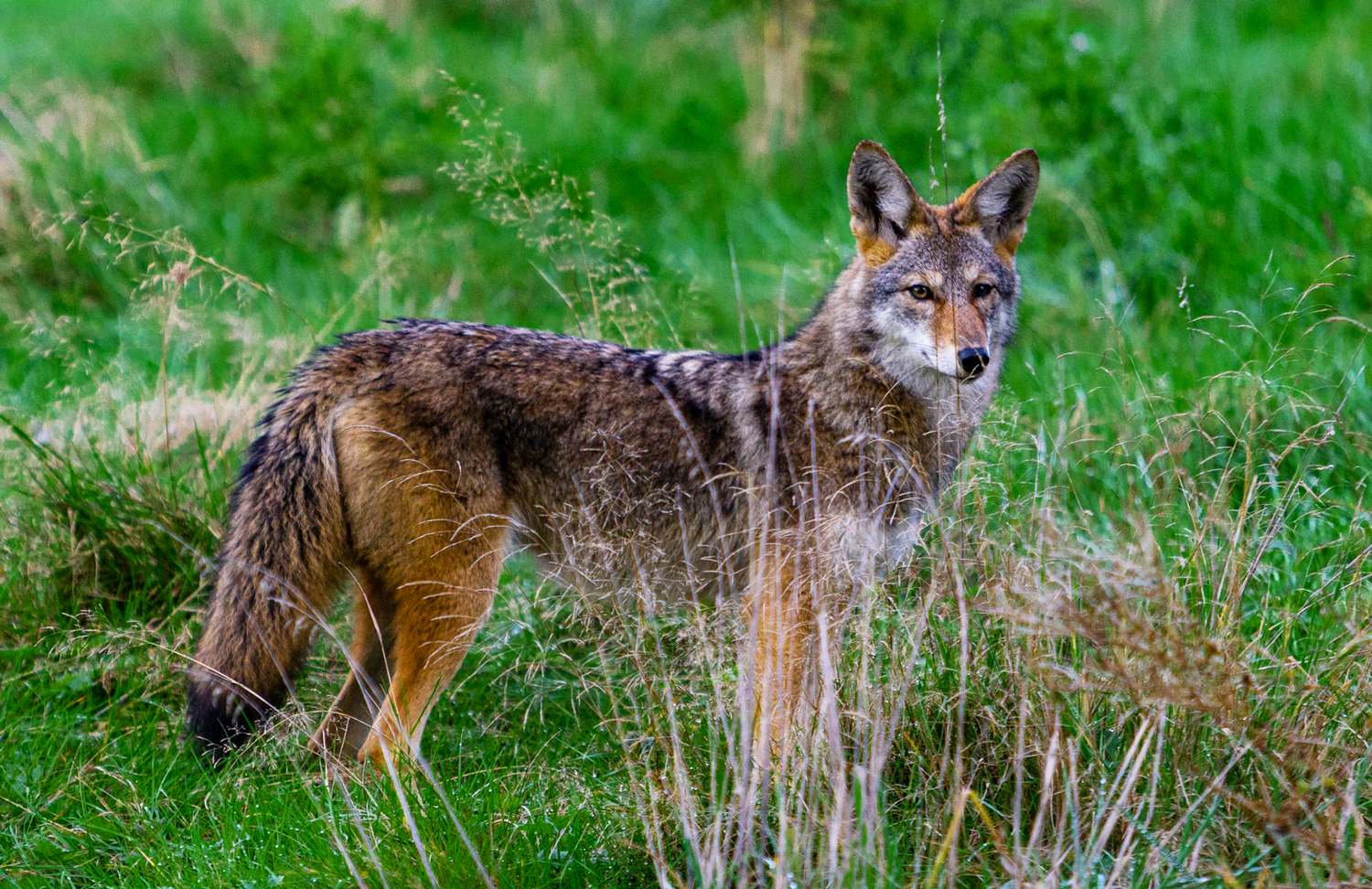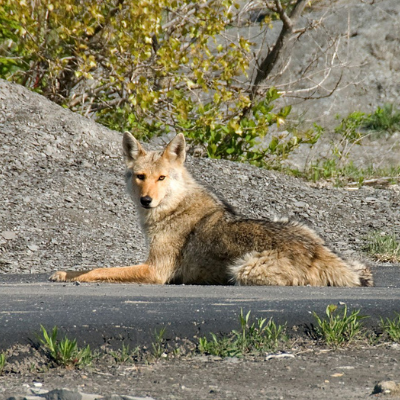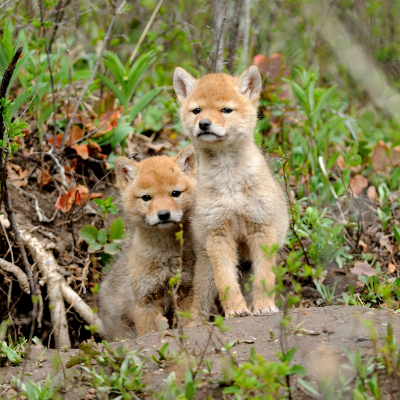Coyotes in Arkansas
What is a coyote?
Coyotes are members of the canine family that includes wolves and foxes. They are native to Arkansas and can be found in all counties throughout the state. Coyotes usually weigh between 25 to 35 pounds. According to the Game and Fish Commission, they are about the size of a small collie dog. They are reddish-gray in color and may appear to be a tall fox from a distance. A close encounter would reveal their yellow eyes and the typical black tip of their bushy tail. These canines are incredibly intelligent with keen senses of sight, smell, and hearing with a life span of 10 to 12 years.
What are urban coyotes?

While coyotes are typically nocturnal predators living in brushy habitats, they are also opportunistic feeders who may find their way into urban neighborhoods. Even the nation’s largest urban areas have become coyote habitats. A study and resource organization known as Urban Coyote Research has compiled basic information on the topic with an emphasis on the situation in the area around its Chicago home base.
Why do coyotes gravitate to urban areas? Backyards contain mice, rabbits, squirrels, and voles for prey, and ample water is available in parks, green spaces, and backyards. Also, coyotes aren’t hunted or trapped in urban areas, which helps them survive.
How to deter coyotes from your property
Homeowners can take preventive measures to keep coyotes away from their property. Coyotes that scavenge in residential neighborhoods can lose their fear of people and begin testing humans or pets as possible prey.
Preventative Measures
- Don't feed them. Place scraps and other leftovers in secure garbage cans instead of compost piles.
- Secure your property with fencing. Coyotes are skilled climbers and jumpers, so fencing should be at least five feet high with a roll bar or electric wire at the top (if local regulations permit electric fencing).
- Install motion detection lights. These can scare away a coyote should one get into your yard.
- Keep small pet cats and dogs indoors at night. Pets are potential prey for coyotes and should be kept indoors at night to protect them from these nocturnal predators.
- Store pet food indoors. Remember that coyotes scavenge for an easy meal.
- Keep bird feeding areas clean. Maintain a minimum of bird seed available to wildlife. The extra seeds attract small mammals such as mice and squirrels, which in turn attract coyotes.
What to do if you encounter a coyote
- If you encounter a coyote, don't run. Running from a coyote may engage its predator-chase response. Instead yell, wave your arms, or throw something at it to scare it away.
- Should a coyote show aggressive behavior by growling, stalking, or chasing then it’s time to notify city animal control or the Arkansas Game and Fish Commission.

Other information to consider
Coyote mating season begins in February each year. The gestation period is typically 65 days. In April, the female will find a burrow or dig one herself as a den for her pups. Litter sizes are between 4 to 7 pups, with evidence of larger litters in urban areas where food supply is available.
If you find a den of coyote pups, do not attempt to handle them. The presence of pups can increase the chance of negative adult coyote behavior. Instead, report it to the appropriate authorities.